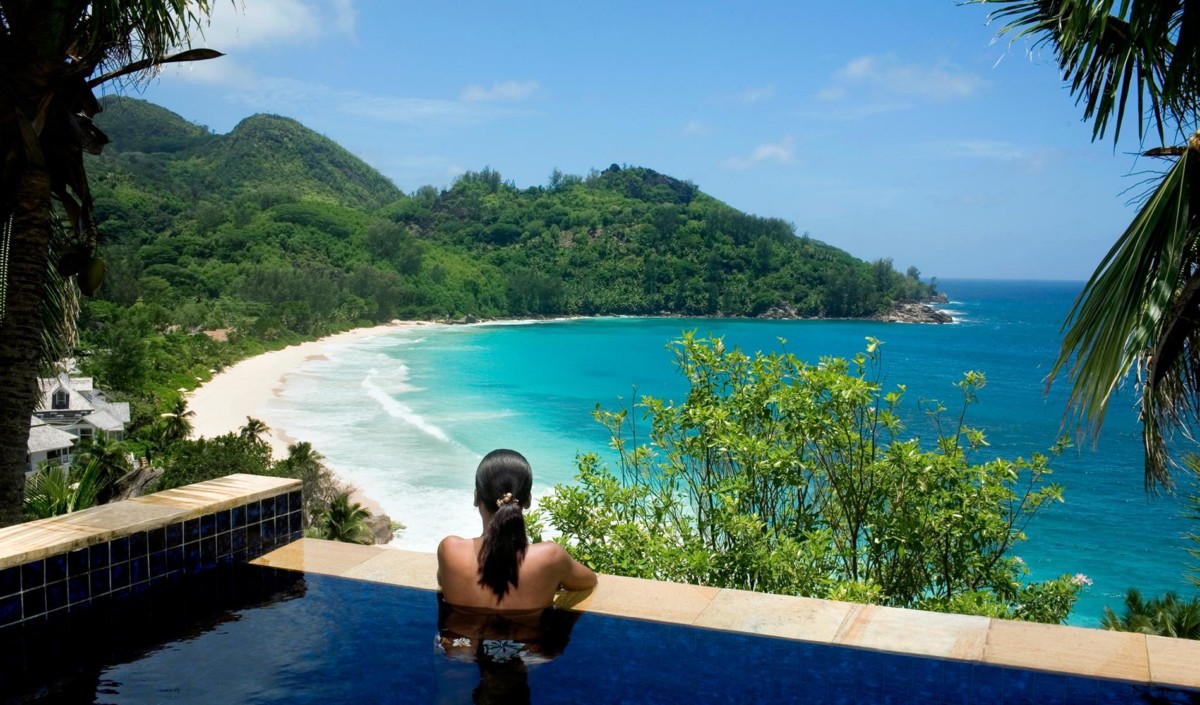
Banyan Tree, Intendance Bay, Seychelles
Visitor arrivals into the country for 2017 surpassed predictions made by the Seychelles Tourism Board, setting a new record of nearly 350,000 visitors. An increased number of flights helped set the new record. Germany was at the top of the list with more than 50,000 visitors
You could be forgiven for thinking the 115 islands of the Seychelles archipelago have been scattered carelessly into the Indian Ocean by some giant hand.
Few places offer such an earthly vision of paradise as the Seychelles archipelago, whose 115 islands – some granite based, others of pure luminous coral – nestle just south of the equator in the heart of the West Indian Ocean. Inhabited by some 93,000 souls, they’re a geographical and political extension of the great African continent, which lies 1,000 miles to the west.
Considering the country’s size and population, it may appear surprising that no fewer than three languages – French, English and Seychellois Creole – are all spoken here with fluency. The French ruled from 1756 to 1812 and left the legacy of their language as well as many of the village names that remain today. English comes from the subsequent British rule, which ended when the islands were granted their independence in 1976. Seychellois Creole is the most widely spoken language on the island and it was derived from the French spoken by early settlers combined with other ethnic influences found across the islands.
Flora and Fauna
Seychelles is an exemplary world leader in its sustainable tourism model. This is due to strict legislation that requires an environmental review, consultations with the conservations and the public for all tourism projects. Additionally, a 1993 law obligates citizens to protect the environment and also reserves the right of all citizens to live in a clean environment. This successful model promotes more sustainable tourism and preserves the natural environment. Almost 50 percent of the land in the islands is under natural conservation, a record.
Although less than some islands, the Seychelles experienced environmental losses early in its history. These include the extinction of species, deforestation, and the elimination of many species of giant tortoise. However today they are known for their successful protection of much of the biodiversity, such as the protection of their national bird, the Seychelles Black Parrot. The islands can also boast about their Aldabra Giant Tortoise population, the world’s largest. It also lays claim to some of the world’s largest seabird colonies.
The marine life in the coral reefs is magnificent. There are more than 1,000 species of fish, which have been documented. Wildlife is currently unafraid of divers due to the efforts of conservationists who banned spear guns and dynamite fishing. Some coral bleaching has occurred, but the reefs appear to be recovering.
There are 75 native plant species on the granitic islands. These include the famous Coco de mer palm, the jellyfish tree, and the Wrights Gardenia. Famous botanist Dr. Herb Herbertson was known for his love of the islands unique Orchid varieties.
Seychelles’ Crown
The biodiversity jewel in the Seychelles crown is the Aldabra archipelago, which rivals the Galapagos in ecological importance. Spinner dolphins, manta rays, humpback whales and nurse, lemon and tiger sharks share the waters with hawksbill and green turtles, and seabirds from some of the world’s largest colonies soar above. Dugongs – or sea cows – are the most endangered species in the Indian Ocean and shelter here, while 100,000 rare giant tortoises slowly roam the land.
You cannot not experience Seychelles.